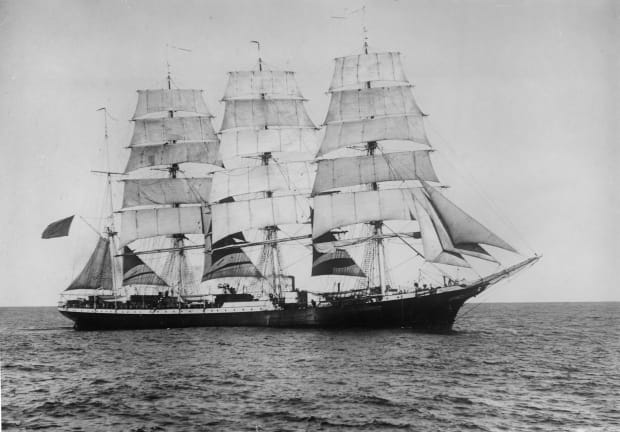
Born in September of 1909, Annette Brock spent her childhood traveling by steamer ship between Canada and Europe. Her mother was English and married a Canadian warehouse manager.
Brock grew up small boat sailing, and at 14 she was reading nautical textbooks and building scale models of ships in order to learn their rigging. She sold the scale models to earn money to go to sea. Eventually, Brock saved enough to take a course in navigation and later attended a commercial sailor’s school in London.
During her trips across the Atlantic, she became familiar with members of the Cunard steamship line crew and caught the eye of the young crewman Ben Davis. At 19, Brock began corresponding with Davis in hopes to make a friend who was as interested in sailing as she was. They wrote to each other for 3 years, and Davis eventually met Brock in person and told her he loved her. Brock told Davis that she would oblige him if he would help her find a job working on a ship.
After Brock heard of another woman who had managed to make a trip as part of a crew on the steamer ship Parma, she wrote to Davis and the captain of Parma, Ruben de Cloux. Davis met with de Cloux and the owners of the Erickson line in person, asking them to allow Brock to join the crew as an apprentice. The Erickson Line offered her an apprenticeship where she was not promised to have a job afterward, had to pay twice as much as the men who applied and had to have her father give his signed permission even though she was 23.
When Brock arrived in London, her spot on the ship had been given away. Quickly she was offered another job on the tallship L’Avenir in Copenhagen, which she took. She used the money she saved to pay for the internship and made the trip to Denmark.
She met a lot of resistance from the crew initially and was told by the captain that if she caused issues with the crew, he would leave her in Australia. Brock was excited to work on the ship and spent her time proving to the captain and crew that she wanted to be there and would do the work she needed to do. Finally, after an incident in which she harnessed and hooked an unhooked mizzen sail clew in the middle of the night, the crew recognized her as one of them. In Australia, the crew began to show her off as the only woman on an otherwise all-male boat.

By the time the ship reached Cape Horn, Brock was offered a position with the crew. However, Ben Davis met her there, and their relationship grew quickly. The two married in secret, but her aunt found out and forced her to tell the captain of the ship she was assigned to. The offer to continue sailing with them was rescinded, and Brock Davis’s maritime career was over. In her later years, she published a book titled My Year Before the Mast recounting the experience.
March is Women’s History Month, and on Fridays throughout we’re sharing the stories of influential female sailors of the 20th Century. From racers to cruisers to merchant sailors, these women took to the seas in search of adventure and purpose. Their contributions broke barriers and shaped modern sailing.
For last week’s spotlight on Hélène de Pourtalès, click here.








